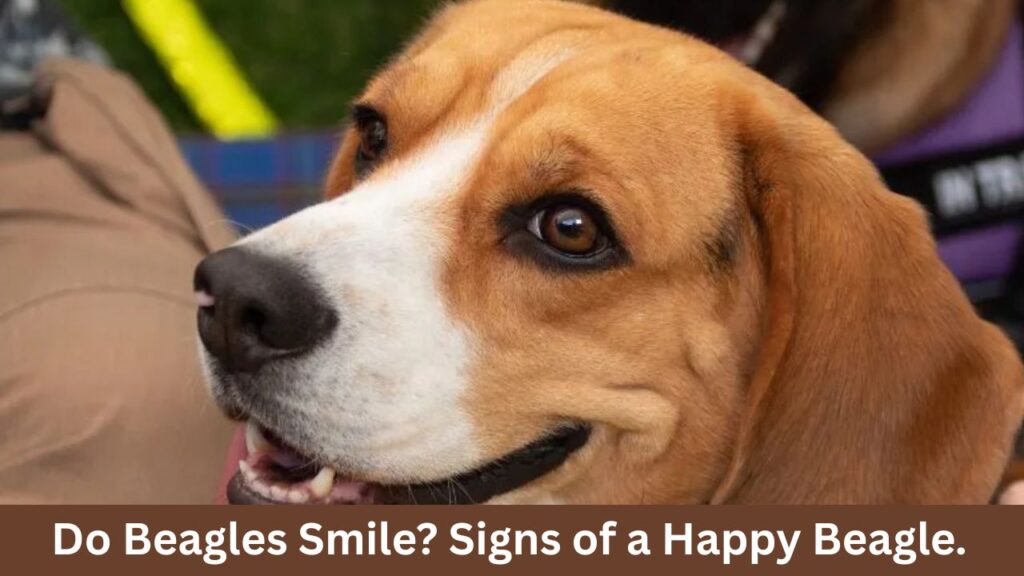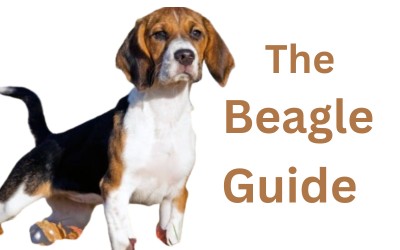Do Beagles Really Smile?Do Beagles Really Smile?Do Beagles Really Smile?
January 30, 2025 | by mrafk.84@gmail.com

Dog Smile vs. Human Smile
When it comes to understanding dog emotions, comparing their smiles to those of humans can be tricky. While a human smile is directly tied to happiness or amusement, a dog’s smile can have different meanings based on its body language and behavior. This is especially true for Beagles, a breed known for its affectionate nature and wide range of expressions. Let’s explore the differences between dog and human smiles and how to interpret the smile of your Beagle.
Facial Expressions and Emotions
Dogs, including Beagles, communicate a lot through facial expressions. While dogs can’t smile in the same way humans do, they show contentment and joy through relaxed facial muscles, a wagging tail, and an open mouth. For Beagles, a “smile” often appears as an open mouth with a slight upward curve of the lips. This relaxed and happy expression is frequently mistaken for a human smile, but it’s actually just the Beagle’s way of showing they are at ease.
Beagle Behavior and Body Language
Beagles, like many other dogs, are social and affectionate. Their behavior and body language are key to understanding how they feel. A Beagle’s “smile” can indicate contentment, but their overall body language—like a wagging tail, relaxed posture, and friendly eyes—often conveys more about their emotions. Beagles are also known for their ability to read their human companions’ body language, making them highly interactive and affectionate.
Do Beagles Smile? Signs of a Happy Beagle

So, do Beagles really smile? In a way, yes! Beagles have a natural expression that can look like a smile, especially when they’re happy or content. Signs of a happy Beagle include:
- A relaxed, open mouth
- Tail wagging
- Ears that are neither too stiff nor too droopy
- Soft, friendly eyes
- A playful or excited demeanor
When your Beagle greets you with a wagging tail and relaxed body posture, it’s their way of expressing joy, often accompanied by that signature “smile.”
The Submissive Grin
While a “happy smile” is common, Beagles may also show a submissive grin. This is different from a joyful expression and is a form of communication used to convey submission. A submissive grin involves a slight exposure of the teeth but usually occurs in situations where the Beagle is trying to show respect or defer to a dominant dog or human.
Interpreting Beagle Communication
Beagles are incredibly social dogs and communicate in various ways. While they don’t have a traditional smile like humans, their overall expressions tell a lot about how they feel. For instance:
- A Beagle showing teeth with a wagging tail and relaxed body posture is likely expressing happiness or excitement.
- A Beagle with a stiff body and ears pinned back may be fearful or anxious.
Understanding the nuances of Beagle communication goes beyond just interpreting their “smiles.” Pay attention to their tail movements, body posture, and vocalizations to fully understand their mood.
The Beagle’s Vocalizations
Beagles are known for their vocalizations, especially their distinct howl or “bay.” While not directly related to smiling, their vocalizations play a significant role in their emotional expression. A Beagle that is content will often express itself through gentle whines or excited barks. On the other hand, when they are stressed or anxious, you might hear more constant barking or howling.
Tail Wagging and Body Postures
One of the best ways to gauge a Beagle’s mood is by observing their tail and overall body posture. A happy Beagle will have a wagging tail, sometimes spinning in circles or hopping around with excitement. Their body will appear loose and relaxed. When they are not smiling, their tail might remain still or tucked, signaling anxiety, fear, or discomfort.
Social Interactions with Beagles
Beagles are friendly dogs that thrive in social environments. They enjoy being around other dogs and humans, which plays into their affectionate nature. If your Beagle is interacting with other dogs or family members, they will often exhibit “smiling” behavior, signaling that they are comfortable and happy in the situation.
Beagle Interactions at Home
At home, Beagles are loyal companions. They may greet their owners with a big “smile” when you walk through the door, showing their excitement to see you. Whether they are cuddling on the couch or running around during playtime, their expressions will often include the relaxed, open mouth we interpret as a smile. This expression is a key indicator of their joy and affection for their family members.
Caring for Your Beagle’s Emotional Health
To ensure your Beagle is smiling as often as possible, it’s essential to focus on their emotional well-being. Provide plenty of love, attention, exercise, and positive reinforcement. Beagles need social interaction and mental stimulation, and when their emotional needs are met, their “smiles” will become a regular sight.
Positive Reinforcement Training
Training your Beagle with positive reinforcement can help ensure they remain happy and healthy. Rewarding your Beagle for good behavior, whether it’s during training sessions or general interactions, will help to build trust and strengthen your bond. A Beagle that feels loved and secure is more likely to show you their “smiling” face.
Recognizing and Reducing Stress
Like all dogs, Beagles can experience stress and anxiety. It’s important to recognize the signs of stress, such as excessive panting, hiding, or barking. Managing stress through routine, exercise, and positive interactions can help keep your Beagle in a happy, relaxed state, making their smiles more frequent.
What’s Next?
Understanding your Beagle’s body language and facial expressions is key to building a stronger relationship with your furry friend. While Beagles might not smile exactly like humans, their joyful, relaxed expressions and playful behaviors are their way of sharing happiness. By paying attention to their cues, you can ensure that your Beagle’s “smile” is a regular part of their life and yours.
In conclusion, Beagles can definitely “smile,” but it’s important to interpret their behaviors and body language holistically. With proper care, attention, and love, your Beagle will continue to share its affection in many ways, including with that heartwarming “smile.”
RELATED POSTS
View all



